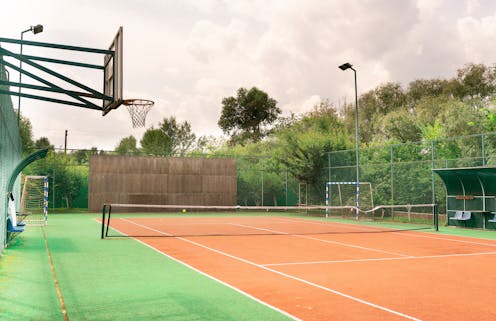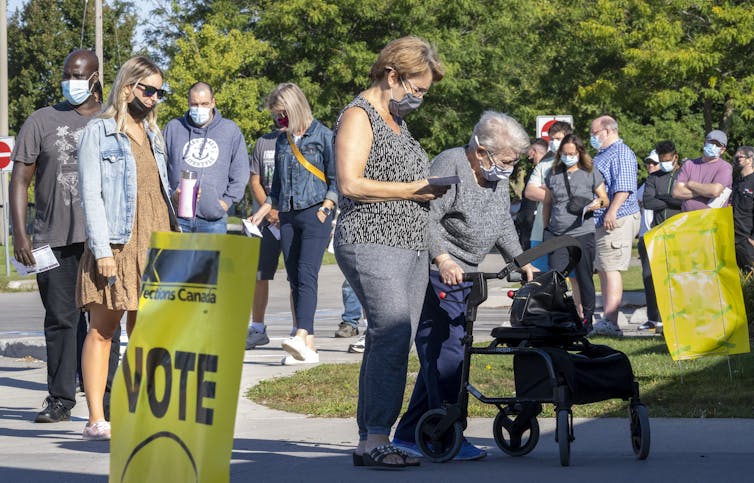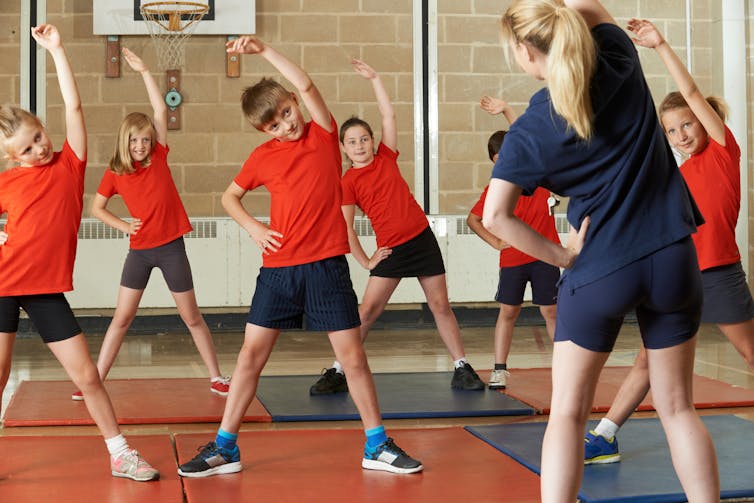
Recreation and sport provide important opportunities to improve physical health, quality of life and well-being in our communities. As a result, some data suggest that 98 per cent of Canadians believe that recreation and parks are essential services.
However, recent data also indicates a decline in sport participation over the past 20 years. In 2021, adults in Canada received an F for sedentary behaviours on the Participaction Report Card, suggesting that participation in recreation and physical activities is also declining.
There are a variety of reasons for why participation in sport and recreation is on the decline, including lack of opportunities, affordability and accessibility. Our research looks at how government decisions impact sport participation for different groups of people and across different areas.
Our work involves understanding the complicated systems that deliver sport and recreation opportunities and how these systems differ across provinces, territories and regions in Canada.
Influence of regional policy
All levels of government make large investments to improve access to sport and recreation. Decisions of elected officials regarding these services can help enhance the social, economic and cultural dimensions of community well-being.
However, different governments view these services and their role in delivering them differently. This turns sport and recreation into a political issue.
The Canadian Sport Policy acknowledges how sport and physical activity is involved in many sectors of society. Education and municipal recreation organizations are particularly important in these systems.
Therefore, provincial and territorial governments play important roles in how sport and recreation systems work.
Questions for candidates
A closer look at regional policy and its effects is an important step in creating effective sport and recreation systems. A better understanding of how political parties view sport and recreation can help inform our decisions when we head to the polls.
Here, we provide three questions that voters can ask their local provincial candidates to understand how their party’s policies will affect the sport and recreation sector. While the details can be adapted based on your province, territory or region, these represent a good starting point for discussing these issues.
1. Which ministry do you believe should assume the responsibility for the portfolio of sport and recreation, and why?
Across Canada, the responsibility of sport and recreation falls under the direction of various provincial ministries. These administrative arrangements affect the sitting government’s perspective and how policy is made and implemented.
For example, in the last 10 years, sport and recreation in Ontario has moved between the Ministry of Economic Development and Tourism and the Ministry of Health Promotion. They now sit with the Ministry of Heritage, Sport, Tourism and Culture Industries.

Similarly, Manitoba and British Columbia locate sport and recreation with tourism, arts and culture ministries. Nunavut administers programs through the Department of Community and Government Services and Prince Edward Island through the Department of Health and Wellness.
Generally, sport and recreation are either aligned with health promotion and healthy living or the promotion of tourism and economic development. These distinctions have important implications for policy development and implementation.
2. How will your government close the infrastructure funding gap for municipalities’ sports and recreation facilities?
According to the Canadian Infrastructure Report Card 2019, an alarming amount of municipal infrastructure is in poor or very poor condition. Sport and recreation facilities in neglected conditions represent an immediate need for action across the country.
The rehabilitation or replacement of these facilities is required in the next five to 10 years to ensure their services continue to meet community needs. Unfortunately, these costs often fall on municipalities.
Infrastructure funding shortfalls burden municipalities all across Canada. Many communities struggle with securing funds to maintain sport and recreation facilities for their citizens. Governments need a plan of action for managing and repairing facilities that are in disrepair.
3. How will your government support access to sport and recreation for diverse groups such as women and girls, Indigenous people, people in rural and remote communities and people with disabilities?
COVID-19 continues to have a profound effect on organized sport and community recreation programs. In addition, recent local and global events have raised awareness of social inequities related to the status of women and girls, and both Black and Indigenous communities in Canada.

To respond to this, coordinated efforts to address inequities in sport and recreation systems are needed.
Provincial and territorial governments can be an important catalyst for addressing issues related to inequity and accessibility of services. For example, Nova Scotia offers the Equity, Diversity and Inclusion sport fund to support programming for underrepresented communities.
Programs such as the After School Physical Activity Program in the Northwest Territories provide funding to schools and organizations to deliver physical activity programs for children after school.
Advocating for local organizations
Public, private and nonprofit organizations all play important roles in community sport and recreation in our municipalities. All of these organizations can benefit from strong policy frameworks designed intentionally to enhance community well-being.
Sport and recreation are important services that can lead to a range of benefits in our communities. But these outcomes don’t materialize spontaneously. Voters need to hold their candidates and political parties to account on these issues and advocate for support for sport and recreation from provincial and territorial governments.
This article was co-authored by Tammy Borgen-Flood, a research assistant at Brock University’s faculty of applied health sciences.
Kyle Rich receives funding from the Social Sciences and Humanities Research Council of Canada.
This article was originally published on The Conversation. Read the original article.







